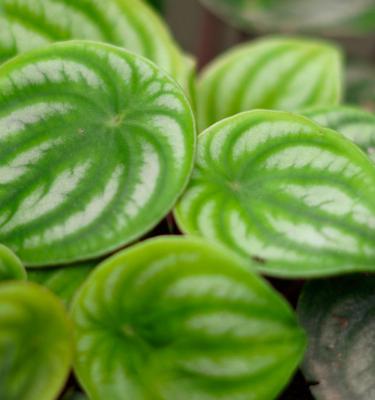

How to grow & care for peperomia
Peperomia plants are grown as indoor plants for their decorative and colourful leaves. You’ll find peperomias (also sometimes called Radiator Plants or Money Plants) with leaves in shades of green, silver, cream, red and even purple. There’s even variegated varieties whose leaves are a striking combination of 2 colours.
Peperomia prefer a bright spot indoors with indirect sunlight - too much direct sun (particularly hot afternoon sun) can burn their leaves.
Top 5 tips for growing peperomia
- Peperomia prefer a spot with medium to bright indirect light.
- Use a premium potting mix like Scotts Osmocote Premium Potting Mix for Indoor Plants to give your plant the best start possible.
- Peperomia like a free draining soil - that’s allowed to dry out between waterings. Make sure the pot has drainage holes and don’t allow water to collect in saucers or the base of cover pots.
- Fertilise peperomias with an indoor plant fertiliser like Scotts Osmocote Pour+Feed for Indoor Plants once a month during spring and summer, to encourage strong healthy growth.
- Peperomias prefer a warm and slightly humid environment away from drying drafts from heaters or air conditioners.
Shopping List
- A peperomia plant
- A suitable pot
- Scotts Osmocote Premium Potting Mix
- Scotts Osmocote Controlled Release Fertiliser for Indoor Plants or Scotts Osmocote Pour+Feed for Indoor Plants
- A garden trowel
- Defender Pyrethrum Insect Spray
Growing in a pot
Choose a pot for your peperomia that’s no more than 2 times the size of the original nursery pot - make sure it has drainage holes or use a black plastic pot that sits snuggly inside a cover-pot or cache pot (pot with no holes).
Half fill your pot with Scotts Osmocote Premium Potting Mix and gently remove the peperomia from the nursery pot and position it into the potting mix, backfill around root ball with more potting mix so that the potting mix is level with, or slightly below, the top of the pot.
Water your new peperomia in well and tip out any excess water from the base of the cover-pot or saucer (if using). These plants prefer a soil that is never soggy and allowed to dry out between waterings. Peperomias are ready to be watered once the top 2-3cm of potting mix is dry to the touch.
Never let water pool in the base of cover-pots or in saucers as your peperomia will quickly rot and die if their potting mix remains soggy or waterlogged.
Fertilising & Care
Fertilise peperomia fortnightly in spring and summer with an indoor plant fertiliser to encourage new growth. Use Scotts Osmocote Pour+Feed for Indoor Plants - this is a simple to use ‘measure and pour’ feed which contains the right balance of nutrients. If you’d prefer a longer term fertilising product, with less applications, apply Scotts Osmocote Controlled Release Fertiliser for Indoor Plants in early spring and again in early autumn - this product feeds for up to 6 months.
In the warmer months of spring and summer peperomias will appreciate a more regular watering and a higher humidity. To increase the humidity around your plant, group it together with other plants to create a microclimate or mist them with a spray bottle regularly. You can also sit their pot on a saucer filled with pebbles and water - as the water evaporates it will humidify the air.
Remove any dead or damaged leaves at the base of the stem to promote new growth. To remove the dust that collects on peperomia leaves, pop it into the shower or bring it outside for a gentle hose off. Be as gentle as you can, peperomia leaves are very prone to snapping off!
Pests & Diseases
Peperomias plants are relatively pest and disease free, however they are sometimes infested with scale, mites or mealybugs - regularly check at the base of the stems and on the backs of leaves for signs of these pests - use Defender Pyrethrum Insect Spray to control them if needed.
Overwatering is the most common cause of problems or death for peperomias. Yellowing or curling leaves are a classic sign of overwatering - reduce your watering and make sure the plant isn’t sitting in a pool of water.



